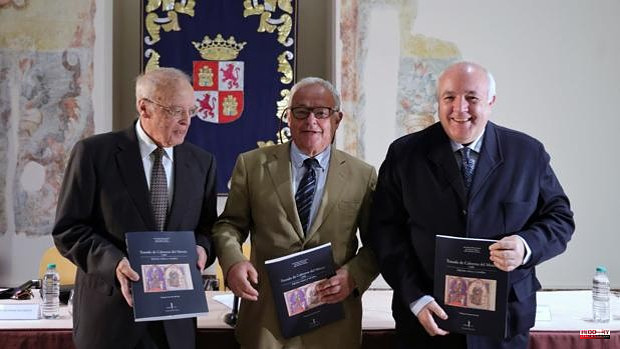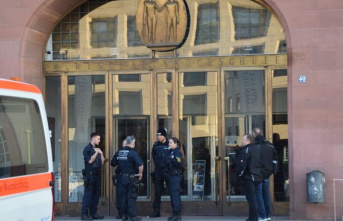Signed in 1206, the so-called 'Treaty of Cabreros del Monte' is an "essential" document not only on a historical level -it signed the 'peace' between Alfonso IX of León and Alfonso VIII of Castile, husband and father of Doña Berenguela , and re-established the infant Ferdinand II as heir to the throne of León- but also from a linguistic and philological point of view, as it is a key text for knowing "the history of Castilian as a universal language". This was highlighted by the Minister of Culture and Tourism, Gonzalo Santonja, who presented in Valladolid the critical edition of the aforementioned treaty promoted by the Board based on studies carried out by university professors José Manuel Ruiz Asencio, José Ramón Morala and Félix Martinez Llorente.
The book, which takes over from research works promoted by the Castilian and Leonese Institute of Language such as the 'Cartularios de Valpuesta', the 'Fuero de Brañosera' or the 'Cartulario Gotico de Cardeña', falls within the line of work that will be carried out by the department headed by Gonzalo-Santonja, which, according to advances, intends to promote "research, editing" and, above all, "dissemination" of documents related to the origins of Spanish, a task, especially the latter, which, in his opinion, has been done "badly" to date, thus preventing the "socialization of knowledge."
In this case, the document, of which there are two copies, according to what the researchers have detailed -one is kept in the Archive of the Cathedral of León and the other in the Archive of the Crown of Aragon-, is written entirely in Castilian romance, something that supposes an anomaly for the time, since in the years before and after that date the Castilian and Leonese royal diplomas were written in Latin. It is, therefore, the first time that a royal institution wrote a document entirely in the Romance language of Castilian, a 'rarity' that, as explained by the professor in the Department of Prehistory, Archaeology, Social Anthropology and Historiographic Sciences and Techniques of the Faculty of Philosophy and Letters of the University of Valladolid, José Manuel Asencio, could be due to the "lack of time" they had for its translation, dated for Palm Sunday of 1206. The researcher has also pointed out that the author of the original manuscript was the Galician Pedro Pérez, "a character of great intellectual stature", who served as notary and chancellor, before being appointed bishop of Salamanca in 1248. "The document was written in such perfect Castilian, with Gothic script, and addressed issues that had never been they had touched before, which invited us to place it closer to 1230 or 1240 than its actual date, ”he explained.
Gonzalo Santonja has highlighted the importance of studying these documents from a multidisciplinary point of view: «You have to start from an unobjectionable paleographic transcription, fix that transition, and from there set up a paleographic study, study it from a historical perspective and from lexicography» . He has recalled in this regard that when the Castilian and Leonese Language Institute published the Brañosera Charter they realized that there are many people interested in these issues, but who have problems facing a genuine version and a paleographic transcription. That is why they then undertook the task of making adaptations to current Spanish.
In addition, this time the edition includes a QR code that will allow readers to access the original plates, to consult the original version of the text.
During his presentation, Martínez Llorente, Professor of Criminal Law and History and Theory of Law at the University of Valladolid, who analyzed the document from a legal point of view, referred to it as "an innovative text" written in a period which was "very problematic", with controversies between the kingdoms of Castile and León. Likewise, it has highlighted its importance, since in addition to establishing "a before and after in relations between the two kingdoms", it meant "the restitution as heir to the throne of Fernando II, who is the great protagonist of the document, although at that time was a tangential guest. "The one who presides over the treaty is her mother, Doña Berenguela, who happens to have recognition from her husband, in the face of the controversy that had arisen with the disapproval of Pope Honorius III, who decreed the excommunication of both spouses ».
The third author of the critical edition, the professor of Hispanic Philology at the University of León, José Ramón Morala, has also referred to this treatise as "a document of special relevance in the historical, philosophical and linguistic aspects". During his intervention in a video, since he was out of Spain to attend a congress, he stressed that the document represents a "milestone" for the study of romance.
2












